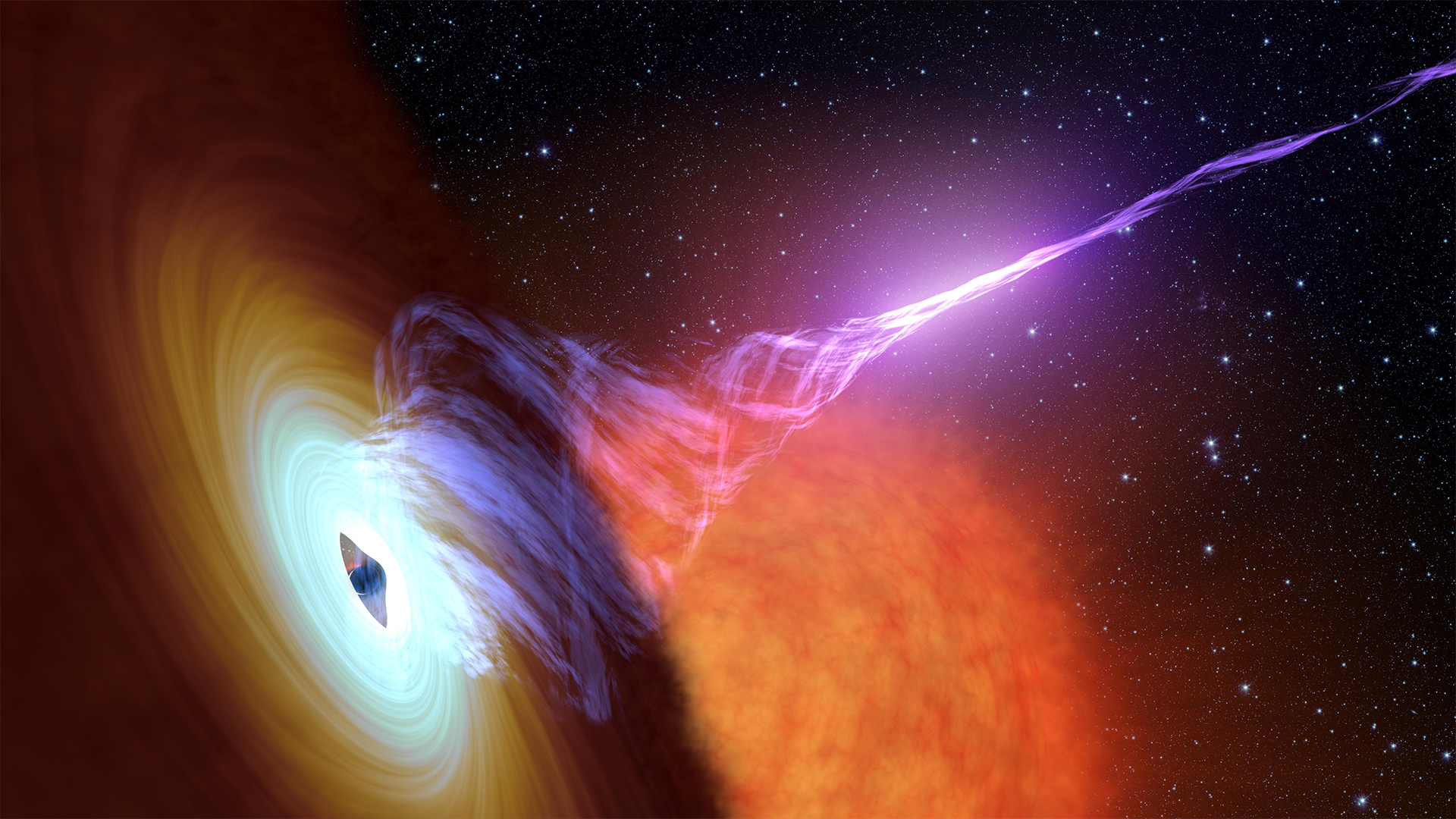
Among his many theoretical insights, Albert Einstein predicted the existence of two phenomena in our universe that have since been proved: gravitational waves and the stimulated emission of radiation. New research has found that these effects can sometimes combine into rare and exotic "gravitational lasers" — possibly leading to a new way to detect one of the most elusive substances in the universe.
You experience stimulated emission of radiation every day in the form of lasers, like the barcode scanner at your local supermarket or the fiber-optic cables beaming information around your city. Within the body of a laser, atoms give off radiation at just the right wavelength to excite nearby atoms, causing them to release radiation of the same wavelength. The radiation cascades until it becomes a coherent beam — the output of the laser. Astronomers have found natural sources of lasers as well, especially in giant cold molecular clouds (where the beams are called masers because they give off microwave radiation).
In a paper posted in January to the preprint database arXiv, Jing Liu, a physicist at the University of Chinese Academy of Sciences in Beijing, suggests that gravity itself could be channeled into a cosmic laser beam — but only if a certain model of dark matter (the mysterious, invisible substance that makes up an estimated 85% of the matter in the universe) is true.
This model of dark matter is based on axions, which are hypothetical ultralight particles that flood the universe. These particles are so light that they have significant quantum properties, meaning their wavelengths are rather large. They don't act strictly as particles but rather a strange combination of waves and particles.
Related: Scientists may finally know where the biggest, oldest black holes in the universe came from
This wave-like nature allows axions to be captured by black holes. But because of their large wavelengths, they don't "fit" inside the black hole's event horizon; instead of falling into the black hole, axions exist around it, similar to the way electrons exist near the nucleus of an atom. These "black hole atoms" may dot the universe, physicists have theorized for decades.
Meanwhile, the black holes themselves tend to emit gravitational waves, which are ripples in the fabric of space-time. Astronomers have already detected gravitational waves emitted by merging black holes, but the complex interactions between solitary black holes and their environments can also lead to wave emission.
If the wavelengths of the gravitational waves are just right (and if the black hole emits enough gravitational waves, then some are bound to be just right), then they can excite the axions around them. The axions surrounding the black hole would then start to move in a coordinated way, triggering the release of even more gravitational waves.
These new gravitational waves would cause even more excitations, until the whole thing cascaded like a laser, beaming out tightly focused gravitational waves in one direction. Liu — who named the theoretical phenomenon a "gravitational laser" — pointed out that this would be a new kind of gravitational wave signal, completely unlike any we have ever seen or studied before.
While powerful, these gravitational lasers would be very rare. First, the conditions would have to be just right to trigger the excitation cascade. Second, most lasers would point away from Earth, since they shoot out from the black holes in random directions, so we wouldn't be able to see them. But next-generation gravitational wave observatories might be able to detect gravitational lasers. If we see them, it would be solid evidence that dark matter exists in the form of axions — and that our universe is awesome enough to permit the existence of gravitational lasers.







